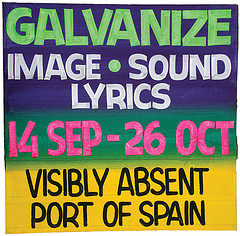Tuesday, April 15, 2003
Intriguing Google facts, from a story that ran in the NY Times on Sunday:
Google ... handles 200 million searches of the Web each day, a staggering one-third of the estimated daily total. To keep up with that torrent, Google has essentially built a home-brew supercomputer that is distributed across eight data centers....
The company stopped giving updates on the size of its computing resources in 2001. But several people with knowledge of the system said it consists of more than 54,000 servers designed by Google engineers from basic components. It contains about 100,000 processors and 261,000 disks, these people said, making it what many consider the largest computing system in the world.
But this is the part I like best:
Not long after arriving at the company in 2001, [Eric E.] Schmidt [Google's chief executive] found that he was contending with a squatter in his office.
One of Google's top engineers, Amit J. Patel, who was sharing space with five others in Google's chronically crowded quarters, decided that he could find relative solitude in Mr. Schmidt's tiny, 8-by-12-foot office. The chief executive would travel and attend meetings often, Mr. Patel reasoned, offering privacy during the intervals.
When Mr. Patel sought permission, Mr. Schmidt turned the decision over to his vice president for engineering, hoping that the request would be denied.
It wasn't.
"We were trying to drive home the point that we needed more office space," said Wayne Rosing, the vice president, a veteran of Apple and Sun.
Mr. Schmidt got the point. In an example of Google's eccentric culture, he let Mr. Patel share his office for several months. He now says that there was an upside to the odd arrangement: Mr. Patel is a master data miner, and Mr. Schmidt soon had instant access to better revenue figures than did his financial planners. (Ultimately, the company expanded to a fourth building.)
There's another reason for this post. Months ago I linked to another Google story in the Times, also mentioning Amit Patel, who some time after added a direct link from his home page to my blog. Over the last few days this link has directed something like sixty visitors here, according to my referral stats, so Patel is at least partly responsible for the sudden spike in my hits (yes, despite, what I said yesterday morning, there has been a spike, as anyone who's bothered to scroll down & hit the Nedstat button can see)--& the new Times story must be generating major activity at his site.
I had 72 hits yesterday (mock on, mock on, Glen Reynolds, Andrew Sullivan--72 hits is a dizzying height for me); my previous all-time record was 27, back in January, before this blog went into semi-hibernation. Most of yesterday's traffic I can attribute to that Guardian article. (Interestingly, there was no significant increase in visitors from T&T--the surge was made up of readers from Europe & North America. Which suggests, of course, that most of yesterday's readers were expatriate Trinis reading the Guardian at the end of the working day in their respective time zones--Europe-based readers predominated during the early afternoon, T&T time, & US-based readers later in the evening.) But most of today's activity has obviously been the belated result of that link from Amit Patel's home page.
Clearly, I continue to be obsessed with my stats....
And, yes, the possibility of an actual audience is a great incentive to diligence on my part....
Google ... handles 200 million searches of the Web each day, a staggering one-third of the estimated daily total. To keep up with that torrent, Google has essentially built a home-brew supercomputer that is distributed across eight data centers....
The company stopped giving updates on the size of its computing resources in 2001. But several people with knowledge of the system said it consists of more than 54,000 servers designed by Google engineers from basic components. It contains about 100,000 processors and 261,000 disks, these people said, making it what many consider the largest computing system in the world.
But this is the part I like best:
Not long after arriving at the company in 2001, [Eric E.] Schmidt [Google's chief executive] found that he was contending with a squatter in his office.
One of Google's top engineers, Amit J. Patel, who was sharing space with five others in Google's chronically crowded quarters, decided that he could find relative solitude in Mr. Schmidt's tiny, 8-by-12-foot office. The chief executive would travel and attend meetings often, Mr. Patel reasoned, offering privacy during the intervals.
When Mr. Patel sought permission, Mr. Schmidt turned the decision over to his vice president for engineering, hoping that the request would be denied.
It wasn't.
"We were trying to drive home the point that we needed more office space," said Wayne Rosing, the vice president, a veteran of Apple and Sun.
Mr. Schmidt got the point. In an example of Google's eccentric culture, he let Mr. Patel share his office for several months. He now says that there was an upside to the odd arrangement: Mr. Patel is a master data miner, and Mr. Schmidt soon had instant access to better revenue figures than did his financial planners. (Ultimately, the company expanded to a fourth building.)
There's another reason for this post. Months ago I linked to another Google story in the Times, also mentioning Amit Patel, who some time after added a direct link from his home page to my blog. Over the last few days this link has directed something like sixty visitors here, according to my referral stats, so Patel is at least partly responsible for the sudden spike in my hits (yes, despite, what I said yesterday morning, there has been a spike, as anyone who's bothered to scroll down & hit the Nedstat button can see)--& the new Times story must be generating major activity at his site.
I had 72 hits yesterday (mock on, mock on, Glen Reynolds, Andrew Sullivan--72 hits is a dizzying height for me); my previous all-time record was 27, back in January, before this blog went into semi-hibernation. Most of yesterday's traffic I can attribute to that Guardian article. (Interestingly, there was no significant increase in visitors from T&T--the surge was made up of readers from Europe & North America. Which suggests, of course, that most of yesterday's readers were expatriate Trinis reading the Guardian at the end of the working day in their respective time zones--Europe-based readers predominated during the early afternoon, T&T time, & US-based readers later in the evening.) But most of today's activity has obviously been the belated result of that link from Amit Patel's home page.
Clearly, I continue to be obsessed with my stats....
And, yes, the possibility of an actual audience is a great incentive to diligence on my part....
Subscribe to:
Post Comments (Atom)









No comments:
Post a Comment